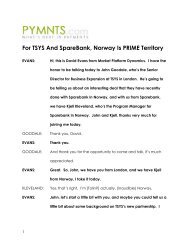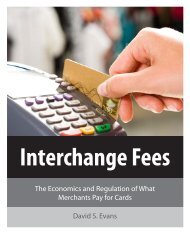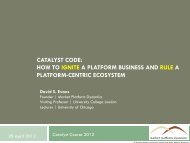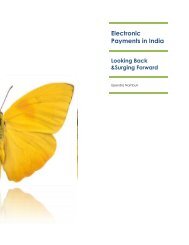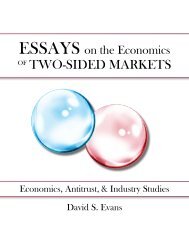Lydian Payments Journal - PYMNTS.com
Lydian Payments Journal - PYMNTS.com
Lydian Payments Journal - PYMNTS.com
You also want an ePaper? Increase the reach of your titles
YUMPU automatically turns print PDFs into web optimized ePapers that Google loves.
There was also a growing disparity between the penalty rate and the regular purchase APR, something we<br />
referred to as “penalty shock” (see Figure 3). In addition, it turns out that the penalty rate is an underlying<br />
price dimension that remains hidden, with the Survey of Consumer Finances suggesting most people (54%)<br />
were unaware they were being charged this dramatically higher rate. 10<br />
Figure 3: Penalty Shock (Penalty APR minus Purchase APR in Solicatations)<br />
The Signal Comes to Dominate and Drive Product Design<br />
While there are certainly signal distortions in the purchase of a new car, basic car design still is centered on<br />
useful attributes such as space, power, fuel efficiency, reliability, etc. The majority of innovations likewise<br />
focus on improving these product features. For credit cards, however, much of what is called product<br />
innovation <strong>com</strong>es in the form of new pricing structures that create perceived value without creating<br />
underlying benefits (or conversely that maintain perceived cost while actually increasing the underlying<br />
cost). An example of a product designed around creating perceived value through a distorted signal is a<br />
“0% for life” offer on certain credit card account balances. The offer is only profitable due to repricing<br />
mechanisms such as penalty APRs and payment allocation rules that create higher prices for the majority of<br />
consumers than what the offer would seem to imply.<br />
The pervasive use of teasers also drives the design of credit card products, other dimensions of pricing, and<br />
the technology used to support those products. Other examples of products designed around the price<br />
structure include “fee harvester” cards that are targeted to the subprime market and often feature a<br />
10 Id. at 6.<br />
© 2009. Copying, reprinting, or distributing this article is forbidden by anyone other than the publisher or author. 31



